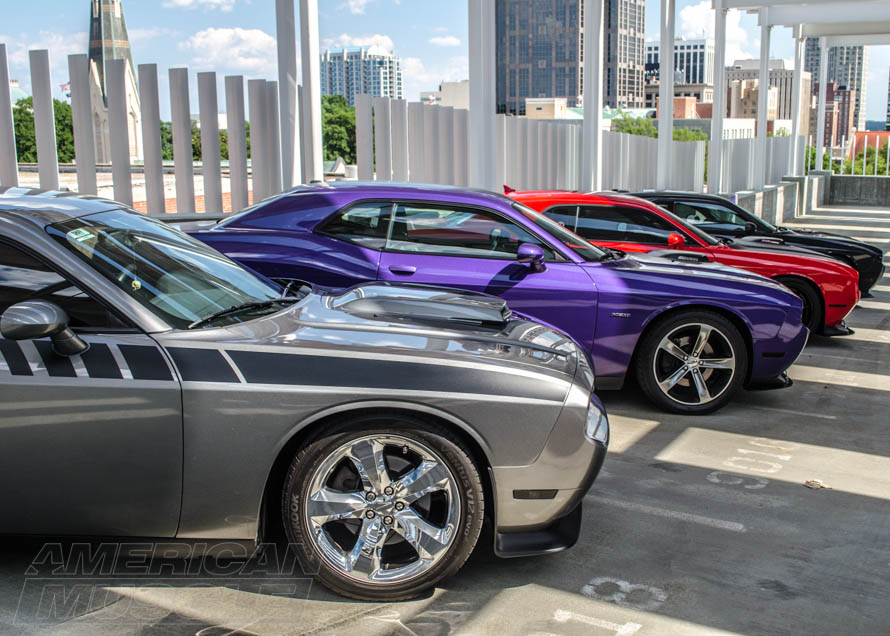Aftermarket wheels aren’t just about their looks. Certain wheels or wheel setups can help significantly improve the performance and handling of your Challenger, whether it be on the road, drag strip, or racetrack. It may not be worth the difference between you being an average joe and NHRA champion, but there are advantages to be gained. the most popular rims in terms of style are the 20x9 Hellcat wheels. These are a seven, split spoke design that brings more to your ride's curbside appeal than the standard solid 5-spoke design.
Lighter Weight Means More Speed: Lighter weight wheels will improve the acceleration of your Challenger, plain and simple. By having to push around less weight, the power-to-weight ratio of your Dodge will increase. Going along the same lines, equipping your vehicle with lighter wheels will reduce its unsprung weight—or the mass of wheels and suspension not supported by springs—which will improve its handling response and ride comfort. Finally, reducing rotational weight with aftermarket wheels will improve both acceleration and deceleration times.
- Increase power-to-weight ratio
- Improve acceleration and deceleration times
- Better handling due to less unsprung weight
Improved Launching with a Staggered Wheel Setup: Look at almost any dedicated drag car and you’ll notice the front wheels are significantly narrower than the rears. This is called a staggered wheel set up—also known as “fats and skinnies”—are used to improve the launch performance of the car. The rear will typically be set up with 15” or 16” rims allowing a tire with a larger sidewall to be used for maximum grip without spin. Up front is a set of narrow wheels, designed to save weight and promote acceleration times. Note this setup with narrow front wheels will sacrifice cornering potential.
Balanced Setup for Autocross and Track: Planning on hitting the twisty courses? Picking out a set of wheels with a mid-size diameter—say 17” to 18”—can help improve the handling quality of your Challenger. By choosing a wheel with a larger diameter, you’ll be able to decrease the sidewall height of the tire, which will reduce tire flex and boost corner-carving abilities. Unlike a drag racing set up, you’ll want the widths of your wheels on the front and rear to be identical. And remember, the lighter the weight the better, but pick a rim sturdy enough to handle track use.

